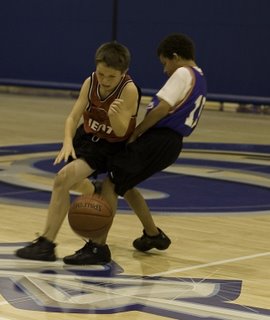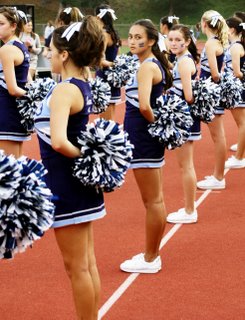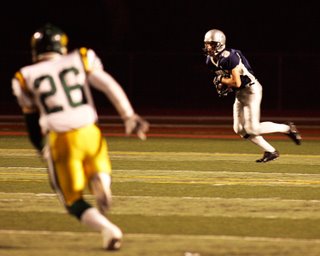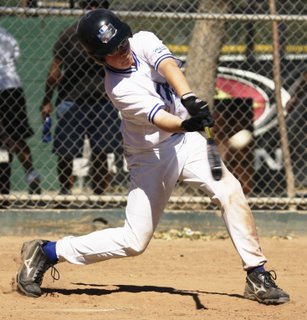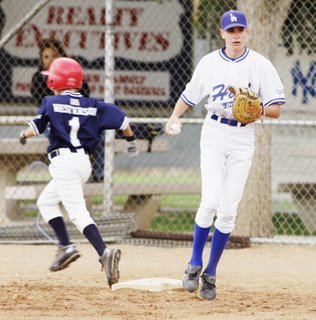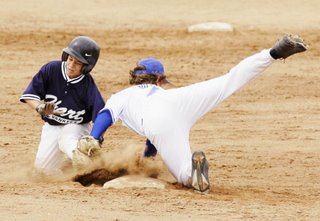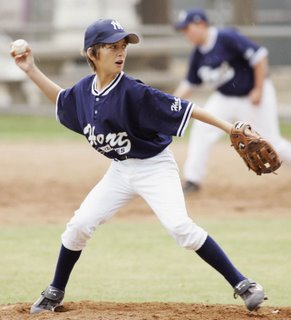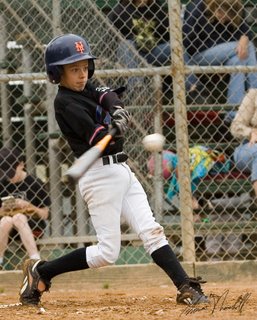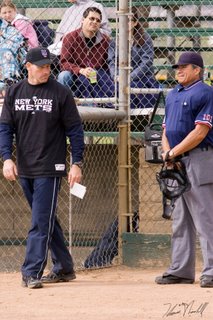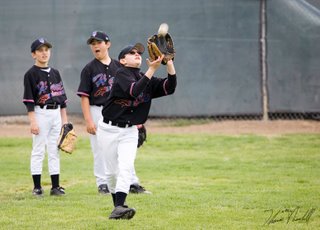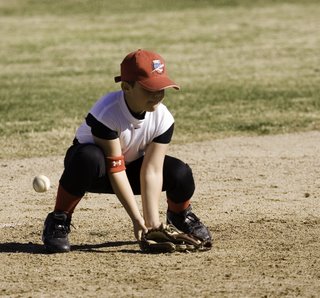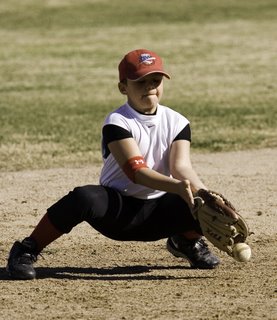Some Basic Guidelines for
Sports Photography
These guidelines are just ideas to think about before releasing the shutter of a camera at a sporting event. Sometimes guidelines are meant to be broken, especially if you are a non professional, or an artist.
The guidelines are mainly for those that want to go professional and sell photos to magazines and news papers.
The youth level, however, for the parent, the coach, or the youth player, the guidelines should always be seen as a way to compliment the image, and not something set in stone.
1) Rule of 6= Don't include the whole team in any one picture frame. It looks too cluttered. Use no more than 6 players from the teams to get your point across.
2) Action shots can be thought of as a triangle of elements to capture the best possible photograph. The facial expression, the action itself, and the ball/equivalent. A good action shot should include facial expressions and the ball. If the face or the ball can not be shot, then one of the other two elements must be present. Opposing teams are good to get in the shot, but make sure to get the main player composed before the secondary player. Body language is acceptable and can be substituted if facial expressions are not possible, but, with that, a story should always be told. A player's back to you just standing there is boring. A player's back to you while he is picking his nose tells a story.
3) Focus all your shots to be TACK SHARP. Anything less is not a good picture. The sharpness of the image should be done in camera...always. Trying to sharpen the image in a photo editor does not work because the photo itself has to be somewhat sharp in the first place. Of course, if motion is introduced in the image in a purposeful way to tell a story, than this is ok as long as the subject is sharp while the back ground shows motions.
4) Compose your frame to have all of the players limbs in the frame. Try not to cut limbs off.
5) A player running twords you is a better picture than a player running away from you.
6) Keep your back ground soft, and don't include ANY advertisment. Banners of the teams or the league are ok, but Nike, or Burger King is distracting unless you are going after ad shots. If that's the case, then these guidelines don't matter. Also, recon your venue. Find the back ground you like best and use it. A blank wall is better than a parking lot. The score board is better than the sports fans.
7) Crop tightly...again, crop tightly. If you can't do it out of camera, then do it in editing. Your after a story, and minimal distractions. Crop tightly.
8) Anticapate your shots. Especially on a long lens. KNOW YOUR SPORT. Focus your lens on a part of the playing area where you think the most plays will be, and let the action come to you.
9) Wide lens shots are great for full team shots, full stadium shots, fan shots, fields shots.
10) There is more to sports than the competition. Look for stuff before, during, and after any game. The lone ball, the hash mark, the tossed baseball cap, the deranged fan, the drunk owner.
11) I mentioned this, but I can not stress enough but KNOW YOUR SPORT. Anyone, including grandma with her point and shoot can photograph a sporting event, but if you don't know when to anticapate the action, then why are you there. If it is a new sport to you, start watching ESPN and go to that sporting event. Ask questions to people that do know the sport. Baseball is differant photographically than football. Baseball you are limited to where you can stand, football you can roam up and down the field.
12) Find out who the stars are, or the impact players are before the game. These people will be more in demand from editors, and/or they will be the players that make the great plays.
13) Know your peramaters with the sport. Youth sports usually has no problems of where you can be to take pictures. But, when you get into college, and pro sports, there are guidelines to be aware of to not interfere with the coaching staff and the players.
14) Bring a flash with you, but ask first if you can use the flash. Sometimes coachs don't like flashs to be used, or the flash may be distracting to the player; e.g. the fast lens.
15) Bring extra everything with you especially batteries, you will need it.
16) Avoid fence lines going through your players image if possible. A player being impaled by a fence line looks like they are being impaled.
17) Make sure your horizon is level. If it's art your after, then this guideline is up for grabs. If it's a good photograph your after, then this is an important guideline.
18) When editing your images, never edit out, or crop out the chin of a player. The eye's and above are OK to edit out but never the chin and below. Make sure skin tones are realistic and consistent. Remember to keep a story in mind weather it is an action shot or a simple head shot. Head shot too can tell a simple story, weather its dirt on the face, a tilt of the helmet, a blink of an eye...
19) Shooting in the RAW format gives you more flexibility when shooting and especially when editing. Shooting JPEG is faster, but RAW is better. Learn RAW.
20) Carry a second camera with you with a lens set that complements the first camera. Bring appropriate camera gear you will need to get the appropriate shot. Once your at the venue, it is a big pain to go back home to get something you forgot. Being prepared is key.
21) Bring business cards, especially if you are shooting other peoples youth players. Parents are curious to know who is taking photo's of their kids because there are a bunch of sicko's out there exploiting the kids on the internet. At the very least, carry business cards so you can trump up business, get your name out there in the market and get clients.

